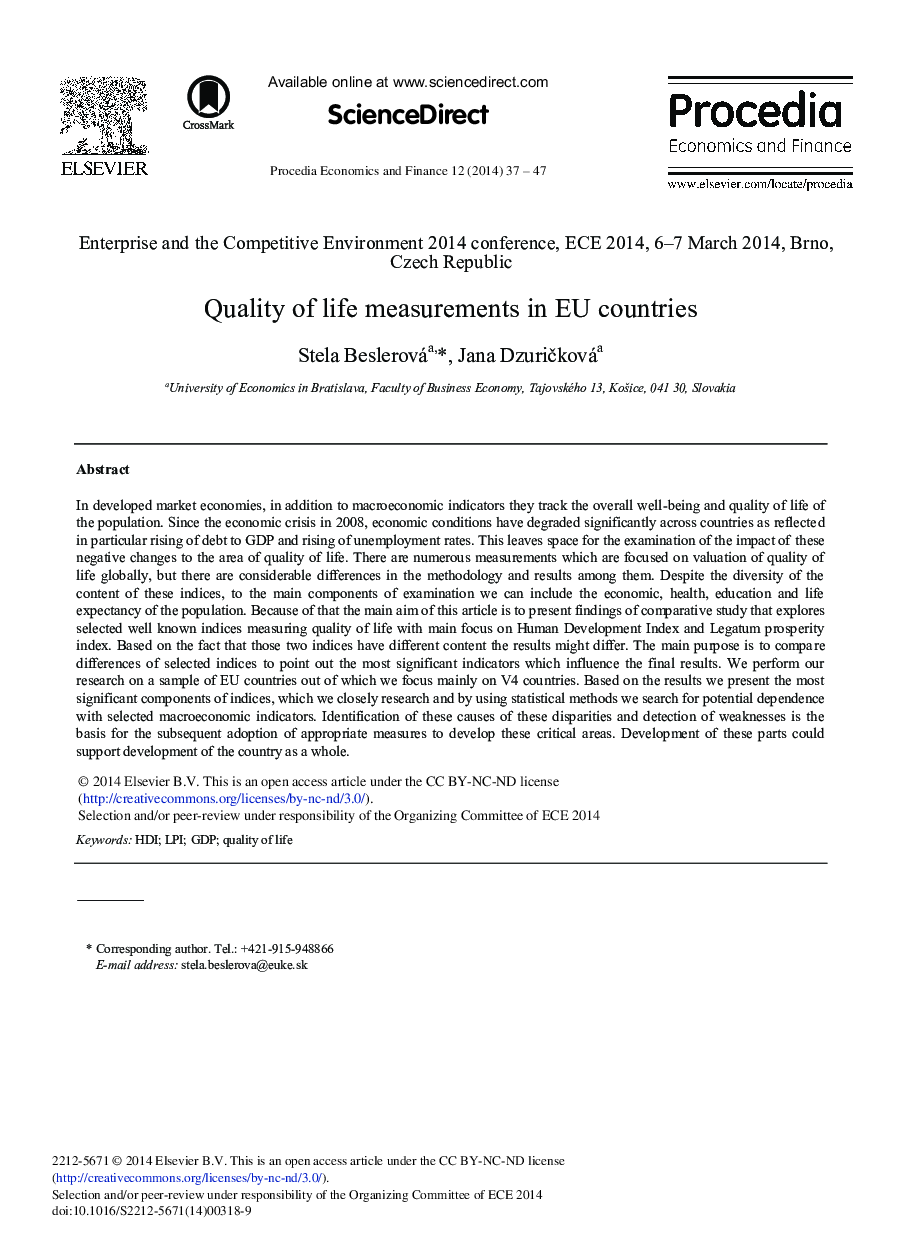| Article ID | Journal | Published Year | Pages | File Type |
|---|---|---|---|---|
| 983134 | Procedia Economics and Finance | 2014 | 11 Pages |
In developed market economies, in addition to macroeconomic indicators they track the overall well-being and quality of life of the population. Since the economic crisis in 2008, economic conditions have degraded significantly across countries as reflected in particular rising of debt to GDP and rising of unemployment rates. This leaves space for the examination of the impact of these negative changes to the area of quality of life. There are numerous measurements which are focused on valuation of quality of life globally, but there are considerable differences in the methodology and results among them. Despite the diversity of the content of these indices, to the main components of examination we can include the economic, health, education and life expectancy of the population. Because of that the main aim of this article is to present findings of comparative study that explores selected well known indices measuring quality of life with main focus on Human Development Index and Legatum prosperity index. Based on the fact that those two indices have different content the results might differ. The main purpose is to compare differences of selected indices to point out the most significant indicators which influence the final results. We perform our research on a sample of EU countries out of which we focus mainly on V4 countries. Based on the results we present the most significant components of indices, which we closely research and by using statistical methods we search for potential dependence with selected macroeconomic indicators. Identification of these causes of these disparities and detection of weaknesses is the basis for the subsequent adoption of appropriate measures to develop these critical areas. Development of these parts could support development of the country as a whole.
